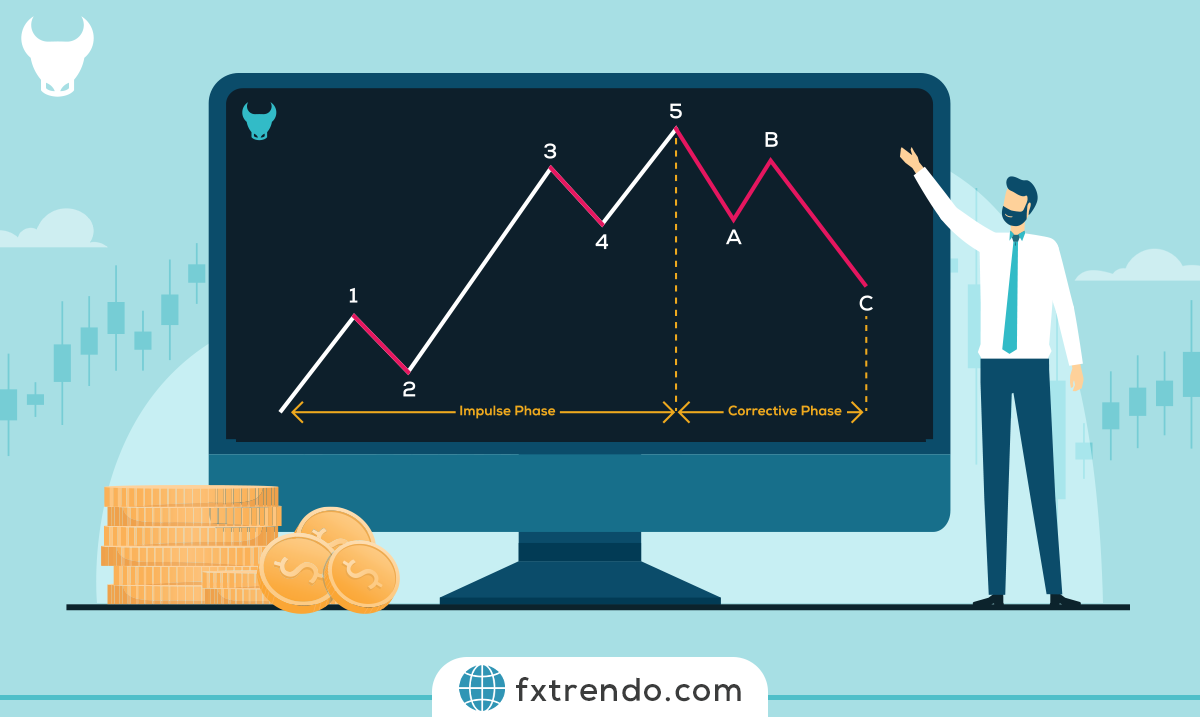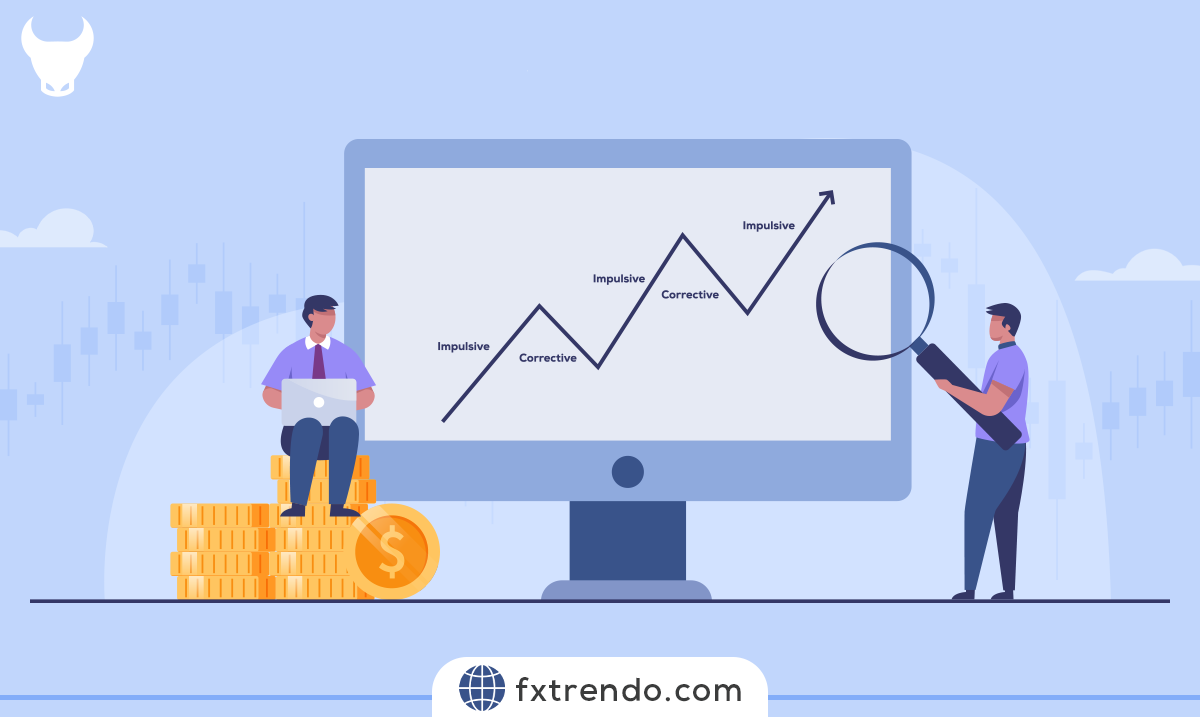The Ultimate Guide to Forex Analysis in 2025


To succeed in this competitive field, professional traders rely on three key types of analysis: technical analysis, fundamental analysis, and sentiment analysis. These analytical methods act as powerful tools to predict market trends and make informed decisions.
However, many individuals enter the forex market without sufficient preparation or understanding. This lack of readiness often leads to significant losses, as they fail to grasp the importance of analysis and the strategies required for success. Mastering technical, fundamental, and sentiment analysis is not just an advantage—it’s essential for navigating the complexities of forex trading.
In this article, we will explore these three types of analysis in detail, highlighting their benefits and limitations. By understanding their role and application, you can take a decisive step toward becoming a confident and informed forex trader.
Stay with us as we uncover the foundations of effective trading.
Contents
Types of Forex Analysis
In the world of forex trading, understanding and mastering the different types of analysis is essential for making sound decisions and maximizing success. Each method offers a unique perspective on the market, enabling traders to interpret trends, identify opportunities, and manage risks effectively.
The three primary types of forex analysis are technical analysis, fundamental analysis, and sentiment analysis. Let’s explore each one in detail:
Technical Analysis
Technical analysis is one of the most widely used methods for evaluating financial markets, including forex, stocks, cryptocurrencies, commodities, and even real estate. This approach relies on studying historical price movements and chart patterns, operating on the belief that all the necessary information for predicting future prices is embedded within the charts. Technical analysts follow three core principles:
1. Price Reflects All Information: Market prices account for all available information, including fundamental and psychological factors.
2. Trends Persist: Prices tend to move in trends, and changes in direction are often gradual and predictable.
3. History Repeats Itself: Past price patterns and behaviors are likely to recur, providing insights into future movements.
Let’s delve deeper into key aspects of technical analysis:
1. Price Action
Price action is a favored method in technical analysis that relies on analyzing market demand and supply directly on charts. By identifying support and resistance levels, traders can anticipate price movements without relying heavily on external tools.
Several price action strategies have gained popularity among traders, including:
- Lance Beggs Method
- Nial Fuller Style
- Supply and Demand (Alfonso Moreno)
- Sam Seiden’s Approach
- RTM (Read the Market)
- ICT (Inner Circle Trader)
- Richard Wyckoff’s Principles
- Al Brooks Method
- Smart Money Concepts
For example, in the image below you can see the AL BROOKS price action cycle on the gold chart (XAUUSD), this cycle consists of three parts: spike, channel, and trading range:
While mastering all these styles is unnecessary, focusing on one or two approaches and practicing consistently can yield significant results.
2. Indicators
Indicators are supportive tools that help traders pinpoint entry and exit points or identify crucial levels such as support and resistance. While indicators are often used alongside other strategies, some traders use them as their primary tools.
Popular indicators include:
RSI (Relative Strength Index): Highlights overbought or oversold conditions.
MACD (Moving Average Convergence Divergence): Measures momentum and trend direction.
Bollinger Bands: Identifies volatility and potential reversal zones.
Ichimoku Kinko Hyo: Provides a comprehensive view of trends and support/resistance levels.
CCI (Commodity Channel Index): Detects cyclical trends in price movements.
For example, in the image below of the EURUSD currency pair on the one-hour timeframe, you can see the RSI indicator. Traders use this indicator to find overbought and oversold points:
Although indicators can enhance analysis, they are not foolproof and may occasionally generate false signals. Therefore, it’s best to use them as supplementary confirmation tools rather than standalone solutions.
3. Other Technical Analysis Methods
Beyond price action and indicators, other techniques such as chart patterns, harmonic analysis, and Elliott Wave Theory are also widely used. Each method offers unique tools and principles for understanding market movements, catering to traders with different preferences and goals.
Key Considerations in Technical Analysis
1. The price chart is the foundation of technical analysis, with tools like indicators and trading systems layered on top.
2. Mastery of technical analysis requires consistent practice and familiarity with various tools and strategies.
3. Emotional discipline is crucial; traders should adhere to their strategies and avoid impulsive decisions.
4. No technical analysis method guarantees success, so risk management is essential to mitigate potential losses.
By developing a solid understanding of technical analysis and honing your skills, you can better navigate the complexities of the forex market and make more informed trading decisions.
Fundamental Analysis
Fundamental analysis is a critical method for evaluating financial markets, including forex, by examining the economic, political, and social factors that influence asset prices. Unlike technical analysis, which focuses on historical price data, fundamental analysis delves into the underlying causes of price movements. This approach assumes that the intrinsic value of an asset is shaped by fundamental economic conditions and forces. By using this method, traders can gain a long-term perspective on the market and anticipate potential price changes.
Here are some of the key tools and factors used in fundamental analysis:
Economic Indicators
Economic reports, such as inflation rates, unemployment figures, and Gross Domestic Product (GDP), provide valuable insights into the economic health of a country. These indicators can signal whether a currency is likely to strengthen or weaken over time.
Interest Rates
Central banks’ decisions to raise or lower interest rates significantly impact currency values. For instance, an increase in interest rates typically strengthens a currency as it attracts more foreign investment seeking higher returns.
Political and Geopolitical Events
Elections, policy changes, sanctions, and conflicts can cause sharp movements in the forex market. Such events often create uncertainty, which directly affects market behavior and currency valuations.
Economic Calendars
Traders rely on economic calendars to track the release of key economic data. These tools provide the scheduled release times, forecasts, and actual figures of crucial reports, helping traders prepare for potential market reactions.
Advantages and Disadvantages of Fundamental Analysis
Like any trading approach, fundamental analysis has its strengths and weaknesses:
Advantages
Accurate Long-Term Insights: Fundamental analysis is highly effective for long-term market forecasting, offering a broader understanding of price movements over time.
Intrinsic Value Assessment: This method helps traders identify the true value of an asset and compare it to its current market price, revealing potential overvalued or undervalued opportunities.
Disadvantages
Complexity: Fundamental analysis requires deep knowledge of economics and political factors, making it more challenging and time-consuming compared to technical analysis.
Short-Term Volatility: In the short term, prices may behave unpredictably, even contradicting fundamental factors, which can be confusing for traders.
Practical Example of Fundamental Analysis in Forex
Imagine the U.S. Federal Reserve announces an increase in interest rates. This decision typically strengthens the U.S. dollar as investors seek higher returns, making USD-based assets more attractive. Consequently, the EUR/USD currency pair may decline as the dollar gains strength against the euro.
A trader using fundamental analysis could anticipate this change and open a sell position on EUR/USD, potentially profiting from the market movement. However, it’s essential to note that the market’s reaction to news is as important as the news itself. For instance, even positive data can lead to unexpected price movements if the market has already priced in the information.
Therefore, combining fundamental analysis with technical tools can offer a more comprehensive view of how data and news influence market behavior, helping traders make more informed decisions.
For complete information and to view fundamental analysis tutorials, please refer to the fundamental analysis tutorial link.
Sentiment Analysis
Sentiment analysis, also known as market sentiment analysis, is the art of studying the collective psychology of traders in the market. This approach aims to identify the overall mood of the market—whether it is optimistic (bullish) or pessimistic (bearish). The foundation of sentiment analysis is the understanding that collective emotions, even if irrational, can significantly influence market trends and price movements.
Market sentiment provides unique insights that complement technical and fundamental analysis. It helps traders gauge the prevailing attitude of the majority, enabling them to anticipate potential market reversals or continuations. However, interpreting market sentiment can be challenging due to its fluid nature, as it is often influenced by sudden news or economic events.
Tools Used in Sentiment Analysis
To effectively measure market sentiment, traders rely on several key indicators:
Commitments of Traders (COT) Report
The COT report provides detailed insights into the positions of large market participants, such as institutional traders and hedge funds. By analyzing this data, traders can identify whether the majority are leaning towards long (buy) or short (sell) positions, which may indicate overbought or oversold conditions.
Fear and Greed Index
This index measures the level of fear or greed in the market, providing a snapshot of the current emotional state of traders. Extreme fear might signal undervaluation, while extreme greed can indicate overvaluation.
VIX (Volatility Index)
Known as the “fear index,” the VIX measures market volatility expectations. A high VIX value typically reflects heightened market uncertainty or fear, while a low VIX suggests stability and confidence.
Advantages of Sentiment Analysis
1. Identifying Market Extremes: Sentiment analysis helps traders spot overbought or oversold conditions, often signaling potential reversals. For example, if sentiment indicators show excessive optimism, it could mean the market is nearing a peak.
2. Complementary Insights: This analysis fills the gaps left by technical and fundamental approaches, offering a broader perspective on market behavior.
3. Predicting Short-Term Movements: Sentiment-driven price moves, such as sharp reactions to unexpected news, can provide trading opportunities for short-term gains.
Challenges of Sentiment Analysis
1. Limited Data Sources: Compared to technical and fundamental analysis, sentiment analysis has fewer dedicated tools and data sources, making it less straightforward to apply.
2. Rapid Changes in Sentiment: Market sentiment can shift quickly in response to new information, making its predictions less reliable for long-term strategies.
3. Dependency on Context: Sentiment analysis rarely works in isolation. It needs to be combined with other analytical methods to provide actionable insights.
How to Use Sentiment Analysis?
For instance, suppose the COT report reveals that a significant number of institutional traders have taken long positions on the U.S. dollar. While this suggests optimism about the dollar, it might also indicate that the currency is approaching overbought levels, increasing the likelihood of a correction.
Similarly, during the release of major economic data, market sentiment can lead to rapid price movements. For example, if a negative economic report is unexpectedly released, it may instill fear in the market, causing a widespread sell-off—even if the underlying fundamentals suggest stability.
Sentiment analysis is rarely used as a standalone strategy, as the emotional state of the market can change abruptly due to technical or fundamental factors. To achieve a well-rounded trading perspective, traders often combine sentiment analysis with technical and fundamental insights, ensuring more balanced and informed decision-making.
What Is the Best Analysis for the Forex Market?
The forex market, with its dynamic and ever-changing nature, demands deep knowledge and insightful strategies to make informed decisions. As discussed, the three primary methods of analysis—technical analysis, fundamental analysis, and sentiment analysis—each have their strengths and limitations.
No One-Size-Fits-All Approach
No single method can fully capture the complexity of the forex market. Each type of analysis offers a unique perspective:
Technical Analysis: is excellent for identifying price trends and key levels, but it doesn’t account for external economic or political events.
Fundamental Analysis: provides insights into the underlying economic and geopolitical factors driving currency values but may not help with precise entry or exit points.
Sentiment Analysis: helps gauge the overall mood of the market, highlighting potential extremes, yet it relies on rapid and often unpredictable shifts in emotions.
For these reasons, relying solely on one approach can leave traders vulnerable to missing important aspects of the market’s behavior.
The Power of Combining Methods
The most effective traders often blend these methods into a comprehensive strategy. Here’s how combining them can lead to better outcomes:
1. Integrating Fundamentals and Technicals: Fundamental analysis can guide traders on which currency pairs to focus on based on macroeconomic trends or central bank policies. Technical analysis can then help pinpoint the optimal entry and exit points within that context. For instance, if a country raises interest rates (a bullish signal for its currency), traders can use technical indicators like support and resistance levels to execute their trades strategically.
2. Incorporating Sentiment Analysis: Understanding market sentiment can help traders gauge whether a trend is sustainable or overextended. For example, if technical and fundamental indicators suggest a bullish trend but sentiment tools like the Fear and Greed Index indicate extreme optimism, a correction might be imminent.
3. Balancing Long- and Short-Term Perspectives: Fundamental analysis often provides a long-term outlook, while technical analysis excels in short- to medium-term planning. Combining both ensures that trades are not only aligned with macroeconomic realities but also executed at the right time.
Key Takeaways
Technical analysts: should remain aware of fundamental events, as economic news and geopolitical developments can disrupt technical patterns.
Fundamental analysts: can refine their strategies by incorporating technical tools to identify precise trading levels.
All traders: should consider sentiment analysis to understand collective market behavior and anticipate potential turning points.
Ultimately, the “best” analysis depends on the trader’s goals, experience, and trading style. For long-term investors, fundamental analysis might take precedence, while day traders might rely more on technical and sentiment tools. The key is adaptability and the willingness to integrate multiple perspectives for a holistic understanding of the market.
By leveraging the strengths of all three methods, traders can better navigate the complexities of the forex market and improve their chances of success.
Strategies for Effective Forex Analysis
In forex trading, having a clear strategy for analysis is essential for making informed and profitable decisions. The three main types of analysis—technical, fundamental, and sentiment—each provide valuable insights into market behavior. To make the most of these methods, traders should combine them effectively. Here are key strategies for successful forex analysis:
1. Combine Technical, Fundamental, and Sentiment Analysis
One effective strategy is to blend all three types of analysis. Relying on only one method can leave traders vulnerable to unforeseen market changes. By integrating technical, fundamental, and sentiment analysis, traders can get a complete view of the market.
Technical analysis: identifies price levels and trends, helping traders decide when to enter or exit a position.
Fundamental analysis: explains the factors influencing currency movements, providing context behind trends.
Sentiment analysis: shows market emotions, helping traders spot potential turning points when the market is overly optimistic or pessimistic.
Using all three methods together helps traders anticipate market shifts more accurately.
2. Focus on Key Economic Indicators
In fundamental analysis, it’s important to track key economic indicators that affect currency values. Reports such as GDP, unemployment rates, inflation, and interest rate decisions give insight into a country’s economic health.
For example, strong GDP growth and a low unemployment rate usually strengthen a currency. In contrast, rising inflation or a widening trade deficit could weaken a currency. Staying on top of these indicators can help traders predict currency movements.
3. Master Support and Resistance Levels
In technical analysis, identifying support and resistance levels is crucial. These levels are where price movements tend to reverse. Support is the price level where demand increases, halting a downtrend, while resistance is where selling pressure prevents further price increases.
Traders use these levels to make decisions such as:
- Buying near support, expecting prices to rise.
- Selling near resistance, anticipating a price drop.
Mastering support and resistance helps traders improve timing and minimize risk.
4. Stay Informed About Global News and Events
Fundamental analysis involves tracking a wide range of global news events that can impact sentiment and market movements. Political events, natural disasters, and changes in government policies can cause sudden price shifts.
By staying updated on global news, traders can better understand potential market reactions and prepare for any unexpected changes. For example, central bank policy decisions or geopolitical tensions often lead to currency fluctuations, and traders who anticipate these events can react quickly.
5. Use Risk Management Tools
Effective analysis isn’t just about making accurate predictions; it’s also about managing risk. Even the best analysis can’t guarantee success, so traders should implement risk management strategies.
Traders should:
- Set stop-loss orders to limit potential losses.
- Use proper position sizing to protect capital.
- Diversify trades to reduce exposure to a single currency pair.
Risk management tools help protect capital while taking advantage of trading opportunities.
6. Develop a Trading Plan
A clear trading plan is essential for successful forex analysis. This plan should outline entry and exit strategies, risk tolerance, and the methods used for market analysis.
Traders should:
- Define their goals (short-term or long-term).
- Decide which types of analysis to focus on, or combine them based on preference.
- Set risk-reward ratios to ensure potential rewards outweigh risks.
A trading plan helps traders stay disciplined and avoid impulsive decisions based on emotions.
7. Backtest and Refine Your Strategies
Before applying a new strategy, it’s important to backtest it with historical data. This helps traders assess how well the strategy would have performed in different market conditions. Backtesting also identifies weaknesses in a strategy, allowing for improvements before risking real capital.
Refining strategies based on backtesting results can increase accuracy and improve trading outcomes.
8. Practice Patience and Discipline
Successful forex trading requires patience and discipline. Traders must wait for favorable market conditions based on solid analysis rather than making impulsive decisions.
By sticking to a well-defined strategy and avoiding emotional reactions to short-term market moves, traders increase their chances of long-term success.
Effective forex analysis requires a combination of technical, fundamental, and sentiment analysis. By integrating these methods, staying informed about global events, and applying sound risk management, traders can make better decisions. Developing a clear trading plan and remaining disciplined helps traders navigate the complexities of the forex market with confidence.
Common Mistakes to Avoid in Forex Analysis
Forex trading can be complex, and even experienced traders can make mistakes that impact their profitability. Avoiding common errors in forex analysis is key to improving your trading success. Below are some of the most common mistakes traders make and tips on how to avoid them.
1. Over Reliance on One Type of Analysis
Relying too much on just one type of analysis—whether it's technical, fundamental, or sentiment analysis—is a common mistake. While each of these methods provides valuable insights, none of them can predict the market with 100% accuracy.
For example, focusing only on technical analysis may cause you to overlook important economic news that can impact the market. Similarly, relying solely on fundamental analysis might miss short-term price movements driven by technical factors. To get a clearer picture of the market, combine technical, fundamental, and sentiment analysis for more informed decisions.
2. Ignoring Risk Management
Failing to implement effective risk management strategies is another major mistake. Even with the best analysis, the forex market can be unpredictable, and losses are inevitable. Without proper risk management, traders risk losing their capital.
Always use stop-loss orders to limit potential losses and ensure your position sizes align with your risk tolerance. Avoid overleveraging, which amplifies both gains and losses. Proper risk management helps protect your capital and ensures you can continue trading long-term.
3. Letting Emotions Drive Decisions
Many traders let emotions like fear, greed, and excitement influence their trading decisions, leading to poor outcomes. For example, fear may cause traders to exit a position too early, while greed might lead them to hold onto a position for too long, hoping for higher returns.
Stay disciplined and stick to your trading plan, regardless of emotions. Avoid making impulsive decisions based on short-term price fluctuations. Focus on long-term goals and follow your analysis to guide your trades.
4. Overtrading or Undertrading
Both overtrading and undertrading are common mistakes. Overtrading occurs when traders take too many positions, often driven by the desire to make quick profits. This increases transaction costs and risk exposure. Undertrading happens when traders avoid taking positions out of fear or hesitation, missing profitable opportunities.
Find a balance between the two. Stick to your trading plan and take trades that align with your strategy. Avoid trading excessively and don’t hesitate when a good opportunity arises.
5. Neglecting to Stay Updated on Economic News
Economic events and geopolitical developments can significantly impact currency prices. Traders who fail to stay updated on important news, such as central bank decisions, inflation reports, or political events, risk being caught off guard by sudden market movements.
Follow a reliable economic calendar and set up notifications for key reports and events. Being aware of these events helps you make better decisions and adjust your trades accordingly.
6. Misinterpreting Indicators or Data
Many traders misinterpret indicators or economic data. For example, relying too heavily on technical indicators without considering the broader market context can lead to misleading conclusions. Similarly, using economic data out of context can result in incorrect predictions.
Understand how different indicators work and interpret them in relation to the overall market. For instance, while an RSI reading above 70 may indicate overbought conditions, it doesn’t guarantee a price reversal without other confirming factors like support or resistance levels.
7. Failing to Adapt to Changing Market Conditions
The forex market is constantly evolving, and strategies that work in one market environment may not be effective in another. Some traders make the mistake of sticking to one approach even when market conditions change.
Stay flexible and be willing to adjust your strategy based on current market conditions. For instance, if volatility is high due to global events, use a more conservative approach with tighter stop losses. Regularly assess the market and adjust your tactics accordingly.
8. Lack of a Trading Plan
Trading without a clear trading plan can lead to inconsistent results. A trading plan should outline your goals, risk tolerance, preferred analysis methods, and entry and exit strategies. Without a plan, traders are more likely to make emotional or reactive decisions.
Develop a detailed trading plan and stick to it. Regularly review your plan to ensure it remains relevant and aligns with your goals.
9. Ignoring the Importance of Backtesting
Backtesting is testing a strategy on historical data to see how it might perform. Many traders skip this step, which can lead to poor results in real-time trading.
Always backtest your strategies to understand how they might perform under different market conditions. This helps refine your approach and improves your chances of success.
Avoiding these common mistakes in forex analysis is essential for improving your trading performance. By combining different types of analysis, implementing solid risk management strategies, staying updated on global news, and maintaining discipline, you can enhance your chances of success in the forex market.
Conclusion
In the world of forex trading, analysis is essential for understanding market movements and making informed decisions. Three main types of analysis—technical, fundamental, and sentiment—each offer unique insights into market behavior, with their own strengths and limitations.
For beginner traders, it is recommended to start with technical analysis as a foundation, since it is more straightforward and quicker to grasp. As you gain experience, you can incorporate fundamental and sentiment analysis into your strategy.
Combining these three methods allows traders to take advantage of different market opportunities, manage risks better, and increase their chances of success.
If you want to deepen your understanding of forex analysis and improve your trading strategies, visit Trendo for more expert insights, resources, and tools. Whether you're just starting out or looking to refine your skills, Trendo offers valuable knowledge to help you navigate the forex market with confidence.
FAQ
1. What are the three main types of analysis in the Forex market?
2. Which type of analysis is suitable for which type of trader?
3. How does Fundamental Analysis assist in decision-making in Forex trading?
4. Why is combining different types of analysis important in Forex?
5. Can beginners effectively use Forex analysis?
6. How often should I perform Forex analysis?
7. What are the best resources for staying updated on Forex trends?
Article similaire
Le plus visité
0






















